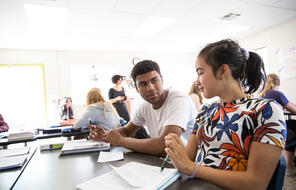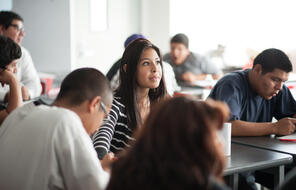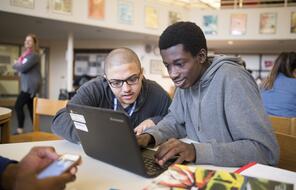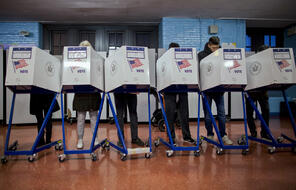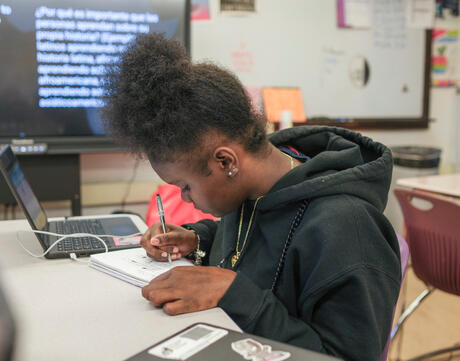
The Impacts of Political Polarization
Subject
- Civics & Citizenship
- Social Studies
Grade
6–12Language
English — USPublished
Get it in Google Drive!
Get everything you need including content from this page
Get it in Google Drive!
Get everything you need including content from this page
Overview
About This Activity
The United States has become increasingly polarized and divided along political lines over the last few decades on a state and national level. In this 20-minute activity, students will explore the second half of the Political Polarization in the United States explainer, which focuses on the consequences and limits of political polarization and potential solutions. Students will reflect on where they see polarization in the news, the negative effects of polarization, and what individual or policy changes can help to minimize its negative effects. By reflecting on solutions, students have the chance to identify the small and big steps that can make a difference in our communities and society.
Activity Materials
- Explainer: Political Polarization in the United States
How to Implement This Activity
- Prepare Students for the Activity
If you taught Activity 2: Understanding Political Polarization, you can briefly review what students learned about political polarization and its causes. If you did not teach Activity 2, you can share the following highlights:- The definition of political polarization from the Political Polarization in the United States explainer
- The fact that political polarization has increased in the United States in recent years
- A summary of the four causes of political polarization listed in the third section of the explainer
- Explore the Consequences and Limits of Political Polarization and Potential Solutions
Then ask students to read sections D, E, and F of the explainer, which explore the consequences and limits of political polarization and potential solutions. As students read, ask them to respond to the following prompts, based on the 3-2-1 teaching strategy:- Three things that they have learned about political polarization
- Two questions that they still have
- One next step they can take to minimize the negative effects of political polarization
- Hold Small-Group Discussions on Polarization
Ask students to move into small groups and discuss one or more of the following questions:- Where do you see polarization in the news?
- How do you think polarization might influence the way Americans respond to current issues and the upcoming election?
- What are the negative effects of polarization?
- What individual or policy changes do you think could help to decrease the negative effects of polarization?
- Identify Possibilities for Change
Next, ask students in their groups to brainstorm and identify one individual change and one policy change that they would recommend to decrease the negative effects of polarization.
Ask students to come back together and share the individual and policy changes they discussed in their groups. You can list these on the board in two columns: one list for individual changes and one for policy changes.
Reflect on and discuss as a group the small and big steps that can make a difference in reducing the negative effects of political polarization.
Extension Activity
Unlimited Access to Learning. More Added Every Month.
Facing History & Ourselves is designed for educators who want to help students explore identity, think critically, grow emotionally, act ethically, and participate in civic life. It’s hard work, so we’ve developed some go-to professional learning opportunities to help you along the way.
Exploring ELA Text Selection with Julia Torres
On-Demand

Working for Justice, Equity and Civic Agency in Our Schools: A Conversation with Clint Smith
On-Demand

Centering Student Voices to Build Community and Agency
On-Demand





